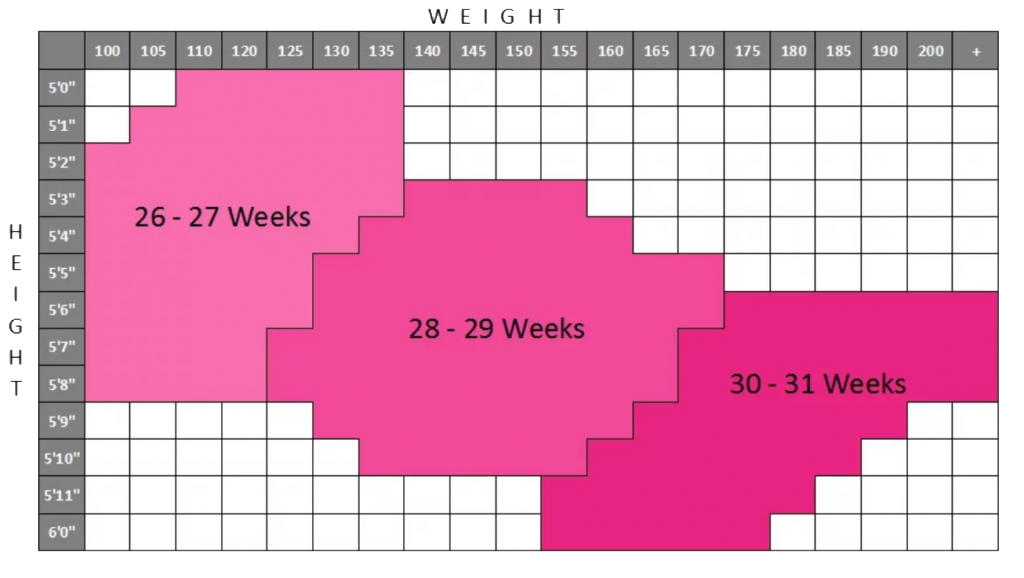Pregnancy Calendar
When’s the best time for a 2D/3D/4D/HD ultrasound? Check out the chart below to find out when is best for you depending on your height and weight!

Ideal Time To Peek
In the early stages of pregnancy you will be able to see and hear your baby’s heartbeat. We can also estimate how far along you are and what your due date will be. This early stage ultrasound also gives Mom peace of mind and eases anxiety.
Gender reveal! This is a great time to see your baby. At this stage the baby is very active. The baby is still small enough where you will be able to see the entire baby on the screen. You will be able to witness the baby moving and kicking although you may not yet feel them. You should start to feel the baby move by 20 weeks gestation. We can also capture video clips for you too!
Your baby’s facial features are becoming more defined and detailed. The baby is getting bigger and gaining weight so you may not be able to see the entire baby on the screen. At this stage you might even catch your baby yawning, kicking, smiling, or perhaps sucking his/her thumb. We’ll do our best to get amazing images of your little one.
At this stage your baby is almost full grown and is settling in and getting ready for the descent. Your baby’s head may already be down in the pelvis making 3D/4D/HD images more difficult to obtain and also due to the lack of space in the womb. Additionally, there is typically less amniotic fluid around the baby in the last weeks of your pregnancy. The lower the amount of amniotic fluid, the smaller the chance of getting great images. Hydration is key! If you are lucky enough to see your baby’s face in 3D at this stage, you will be amazed! You’ll see chubby cheeks, amazing clarity, and detail. This is not guaranteed. We can, however, determine your baby’s position (fingers crossed the head is down). We can also take measurements of your baby to determine the estimated fetal weight. You may also witness the baby “practice breathing” or “hiccups” which both help develop the lungs.